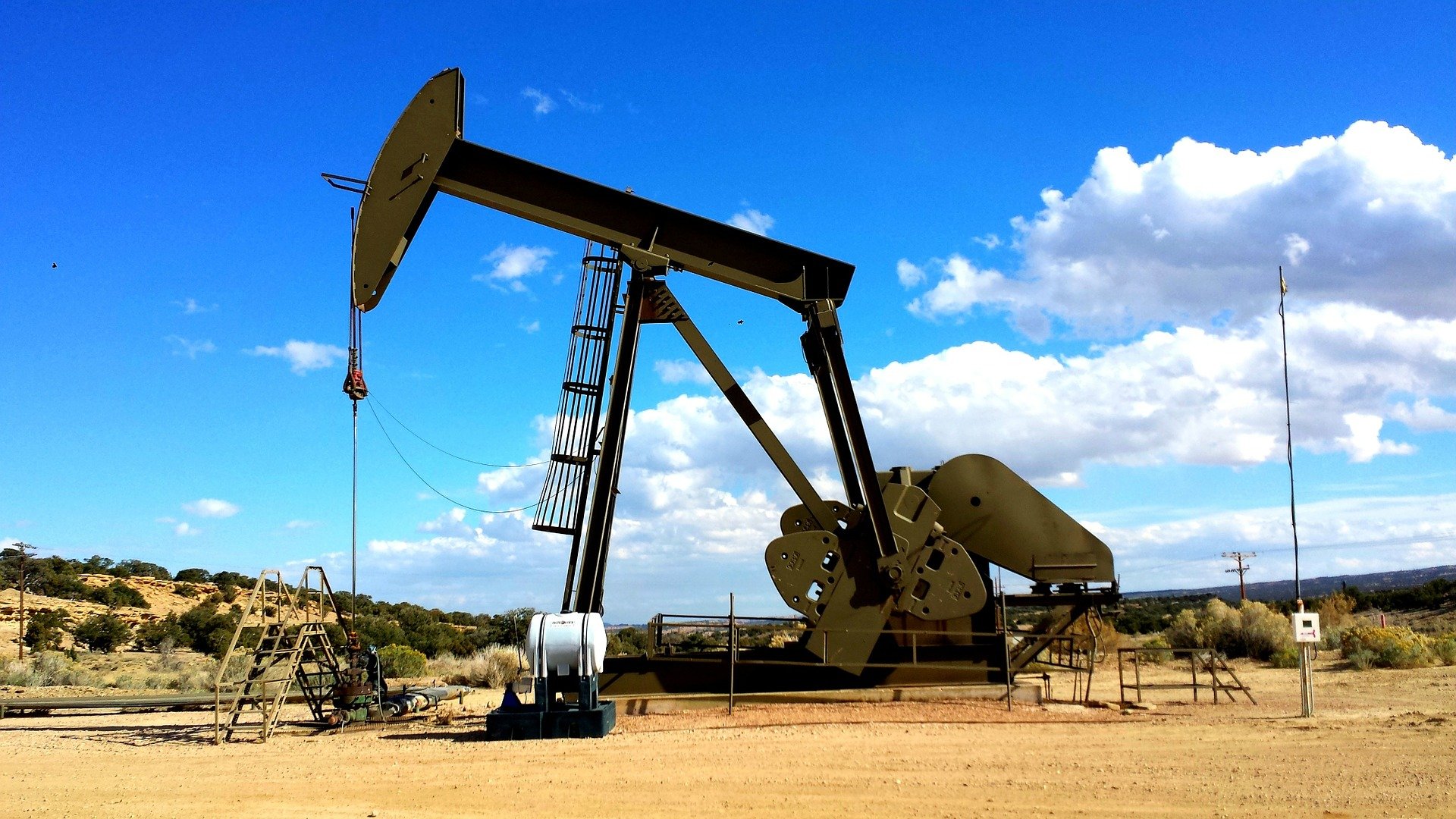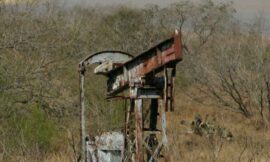Did you know that the Bureau of Land Management (BLM) administers over 245 million surface acres and over 700 million acres of federal minerals in the United States?
The interesting thing is that private mineral rights can be pooled with federal or state mineral rights when spacing units are formed. In this episode, we cover a listener question about royalty interests in wells that are part of state or Federal units. Learn how you can find out if this might apply to you and when you might have to notify the BLM of any assignment or transfer of interests.
Using the embedded player above, you can download the episode to your computer or listen to it here!
Be sure to also subscribe on Apple Podcasts via the link above (or wherever you get your podcasts) and please leave us an honest rating and review. We read every one of them and sincerely appreciate any feedback you have. To ask us a question to be featured on an upcoming episode, please leave a comment below or send an email to feedback@mineralrightspodcast.com.
What are State or Federal Mineral Rights?
Did you know that the Bureau of Land Management (BLM) administers over 245 million surface acres and over 700 million acres of federal minerals in the United States? Many mineral and royalty owners may have heard of the BLM and states holding lease sales to lease these government owned mineral rights for drilling for oil and gas and other minerals.
Once a company leases federal acreage for development, the clock starts ticking and the primary term of federal leases is 10 years so they are a bit longer than a standard oil and gas lease for fee acreage. Federal, state, or county owned oil and gas leases have certain terms associated with them and rather than go into detail about federal oil and gas leasing, what we wanted to talk about today is ownership of mineral rights or royalties associated with wells that may pooled with federal mineral rights as part of state or federal units.
Pooling Refresher
Now, to refresh on what pooling is, it is when a reservoir of oil or gas exists beneath tracts of lands that have multiple owners. These tracts are combined together to form a spacing unit where one or more wells are drilled to extract the oil and gas below these tracts in the most efficient way possible. The royalty interest in these wells is determined based on your proportional share of the acreage that is part of the pooled unit. Pooling can occur on 100% private (non-government owned mineral rights) or on federal acreage or a combination of both. For example, if you own 100% of the mineral rights in 20 acres, and a vertical well is drilled that draws from a 40 acre spacing unit, you would own ½ of the mineral rights in that pooled unit. You can listen to Episode 3 where I covered this concept in more detail and talk about how to calculate your Net Revenue Interest in a well.
Private Mineral Rights Can Be Pooled with State or Federal Mineral Rights
Now, the interesting thing is that private mineral rights can be pooled with federal or state mineral rights when these units are formed. So Unitization is a term that is often used when large tracts are combined across a field usually under one oil and gas operator. Now similar to pooling on private lands where you share proportionally in the royalties from wells in that spacing unit, with a federal unit you would get a pro-rata share of the royalties from any production from wells in the unit whether they are on your acreage or not. So basically your net mineral acres divided by the total acres in the unit would determine your share of production from that unit.
One area where it might be undesirable to be part of a large federal unit is compared to the operator creating a unit that is made up of one or two sections of land and say they drill 12 wells, you would get a larger percentage of the royalties but there would be a smaller number of wells but that spacing unit might get drilled out sooner so you would get royalty payments sooner. Now if you were part of a large federal unit that might be made up of
So you could have an interest in a well that is on federal acreage. A lot of times the name of the well will give this away. It might include the word “Federal” or “State” in the well name.
Now this brings us to our listener question, one of our long-time listeners wrote in a question and thanks for this question because it highlighted a gap in our content. This listener is a mineral investor and this is what they had to say:
I’ve got a very small deal I just submitted an offer to purchase. The deal is in Rio Blanco County, Colorado, and a very small gas interest in SW Kansas.
This is the well in question in Colorado. Right away I noticed the well name is “Government..” and it has a Federal or State Lease # listed. The royalty check from Plains (crude purchaser) states that it is a RI. But we all know these are not always accurate. My first thought it – does a federal or state lease have any particular impact to me if I purchase this interest, and are there any additional steps that need to be taken (such as filing notice with the BLM / completing a BLM transfer form, etc.)? Today it dawned on me to check your list of podcasts, but I didn’t find any on the topic of federal or state leases.
This may be a great topic to cover, because I have yet to meet any mineral owners who have these kinds of interest and can tell me anything about it as it relates to the federal or state portion. My business partner also owns a lot of interests in New Mexico that are federal leases. Some of them are ORRIs. I don’t know how he ended up with ORRIs when his family bought surface and minerals initially, they never bought actual overriding interests. My assumption is that this has to do with the fact that it is a federal lease, but once again, I have no background and have yet to meet anyone who can explain it.
Listener Question from Jarrett
Acquiring or Inheriting an Interest in State or Federal Wells
So to answer the first question, if you are acquiring an interest in a well that is part of a state or federal unit, whether we are talking about purchasing it as an investment or acquiring it through inheritance, you usually don’t have any additional steps that need to be taken with respect to notifying the BLM or state. This assumes you have a royalty interest in fee mineral rights, whether producing minerals or Non-Participating Royalty Interest. When you acquire the interest, you need to notify the operator right away and send them a copy of the recorded deed showing that you are the new owner to get the interest transferred into your name or your company’s name.
Notification Requirements for Federal Interests
If you are acquiring a federal lease, however, there are certain requirements for notifying the BLM of any assignment or transfer of interest with the BLM state office within a certain time period after execution. There may be approvals required from the BLM for these federal lease assignments and there are limitations as to what can or can’t be done in the assignment of federal leases. Now, with Overriding royalties, since those are carved out of the working interest or in this case the federal lease, you do need to notify the BLM of any assignments but the BLM doesn’t have to approve them. There may be other requirements for assignment of federal overrides so check with your State BLM office for more information if you fall into this category. Not here to give advice as to all the steps but to paint the picture of how it is different than fee minerals that are part of federal units.
So again, that isn’t what we’re going to focus on today but just to say when we are talking about fee minerals, you would handle the transfer of ownership just like if you were acquiring an interest in a well that has a spacing unit made up of 100% fee mineral rights. Namely, you need to record a deed, notify the operator of the change of ownership and provide a copy of that deed as proof, might be other requirements that the operator has such as recording a statement of authority if you are acquiring as an entity like a trust or LLC that proves that you have authority to sign on behalf of that entity.
Now, I own interests in several wells that are part of federal spacing units. They have the “Fed” or “Federal” in the well name, federal mineral rights make up part of the unit. When operators form spacing units that contain federal minerals, they have to obtain what is called a Communitization Agreement. BLM regulations says that “When a lease or portion thereof cannot be independently developed and operated in conformity with an established well spacing or well-development program, the authorized officer (BLM) may approve communitization or dilling agreements for such lands with other lands, whether or not owned by the United States, upon determination that it is in the public interest.” So in this case, the federal government has jurisdiction to pool federal lands, not the state oil and gas commission.
The important thing for mineral owners to be aware of is that the communitization agreement outlines how production is to be allocated to each tract that makes up the federal unit.
Now as far as the section point that this listener mentions about his business partner owns interest in wells in New Mexico that are part of federal leases. What I assume he is referring to is wells that are part of federal units. Now it could be that he has an interest in fee minerals that are part of a federal unit like we mentioned earlier. For his ORRI’s, it could be that he was assigned an override in a federal lease or it could be that he has an overriding royalty in an oil and gas lease for fee minerals that are part of a federal unit. Each would be handled slightly differently but without looking at the specifics, it is hard to say.
His email continues –
… this would be a very informative topic to cover on a future podcast. The most I have been able to gather on my deal is that the govt may have reserved part of the minerals when issuing patents.
The BLM website has some detail, although the page details may show more things (like mineral reservation = yes) than the document stipulates word for word. What should an owner be looking for through the BLM data on their property to understand what they actually own?
So he included a link to the BLM General Land Office website where you can perform a search of patent documents for the original land grants from the federal government to private individuals. As he mentions, you really need to look at the land patent documents to understand the specific terms that were associated with that grant. It could be that the government reserved part of the mineral estate. One of the things that I’ve seen regularly is reservation of right of way for ditches or canals constructed by the authority of the US government.
I read something about where the federal government owns part of the minerals, they retain the rights to all of the helium. This was odd to me. I’d ask that you add any additional context to this point in the podcast if you cover this topic.
BLM Information on Helium:
So this was a new one to me. I had to look this up and this is what I found on the BLM website (link in the show notes):
Is all extracted helium reserved to the United States?
Helium produced from Federal acreage is reserved to the Federal Government. State owned or privately owned minerals are not reserved to the United States. But, if fee lands are included in an area that produces Federal helium, then a percentage (commensurate with Federal mineral ownership) of all the helium is deemed to be Federal.
Source: BLM Website
Resources Mentioned in This Episode:
- Federal Oil and Gas Leases: Leasing, Assignments, Communitization Agreements and Units. This excellent presentation provides an overview of what you need to know about federal oil and gas leases.
- This article on Pooling, Unitization, and Joint Leases is a good refresher on the subject.
- This part of the Code of Federal Regulations talks about who has the authority to approve communitization or drilling agreements on federal lands.
- Helium is in short supply so is an especially precious mineral. This page talks about helium and how helium produced from Federal acreage is reserved to the Federal Government.
- The Bureau of Land Management’s General Land Office Records is an invaluable resource for all mineral owners. On this site you can search for the original land patent documents by name or by legal description. You can use this when running title on your minerals from patent to present and you can check if the federal government made any reservations in the original grant of your land.
Thanks for Listening!
To share your thoughts:
- Leave a comment or question below (we read each one and your question may be featured in a future episode)!
- Ask a question or leave us feedback via email or voicemail: (720) 580-2088.
To help out the show:
- Leave an honest review on Apple Podcasts or wherever you get your podcasts – we read each one and greatly appreciate it. Plus, you can get a shout out on a future episode!
Thanks again – until next time!





Pingback: MRP 91: Mineral Rights News February 2021 – The Mineral Rights Podcast